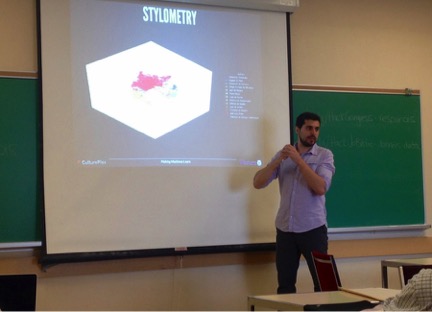The all-day hackfest at Congress 2015 was certainly not reserved for computer geniuses only. Researchers of all levels of technology know-how gathered to collaborate on different methods of tackling research data.
The event encouraged experimentation in learning new technologies, and beginner workshops such as Catherine McGovernan’s “How to Clean up Messy Data” were presented as accessible and user-friendly. Jeanette Hatherill, one of the event’s organizers, explained that technology doesn’t have to be intimidating, and that HackCongress was meant partly to show what researchers can do without needing to write code or worry about "breaking" the software.
Some participants in the event were returning to academia and seeking an introduction to new tools recently developed that would make the analysis of their research data simpler. John Simpson, Digital Humanities Specialist at Compute Canada demonstrated the various resources available to researchers looking to process data. To appeal to the more advanced hacker, two PhD students from Western University made presentations on their work in Western’s Cultureplex lab. David Brown demonstrated the benefit of graph databases in the humanities and Javier de la Rosa (pictured) shared his work on the use of an algorithm to trace the changing standards of human beauty, from historic paintings to photos on social media.
Nancy Lemay, Digital Humanities Librarian at the University of Ottawa, presented an online project undertaken by history students. Professor David Pantalony’s history seminar titled "Provenance of Museum Artefacts" demonstrated just one way that technology can be used to create new platforms for public history. Pantalony applied the expertise of Lemay and Sarah Simpkin, GIS and Geography Librarian, to teach students to use the web-publishing platform, Omeka. Using the open source tool, students were able to supplement the open data provided by the Canadian Museum of Science and Technology with their own photographs of artefacts and other materials. Omeka allowed students to make links between museum collection items for a unique final product. Lemay explained that the resulting web site, Canadian Landmarks Unearthed, is a database-driven collection of work rather than the commonly used static webpage. Omeka also has mapping capabilities, which students used to plot the known geo-locations of artefacts on a map and offer a visual provenance of artefacts. Lemay said that the course and the resulting website is a stepping-stone toward more technology education in humanities and social science courses at uOttawa.

